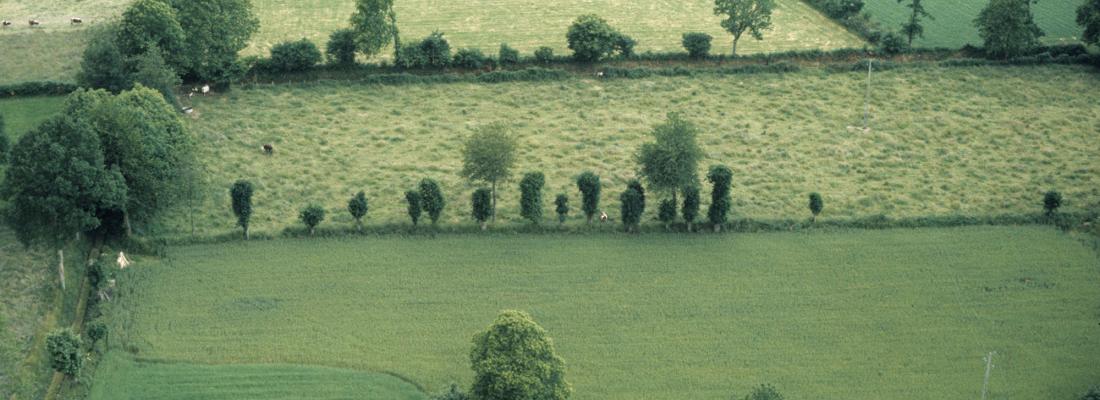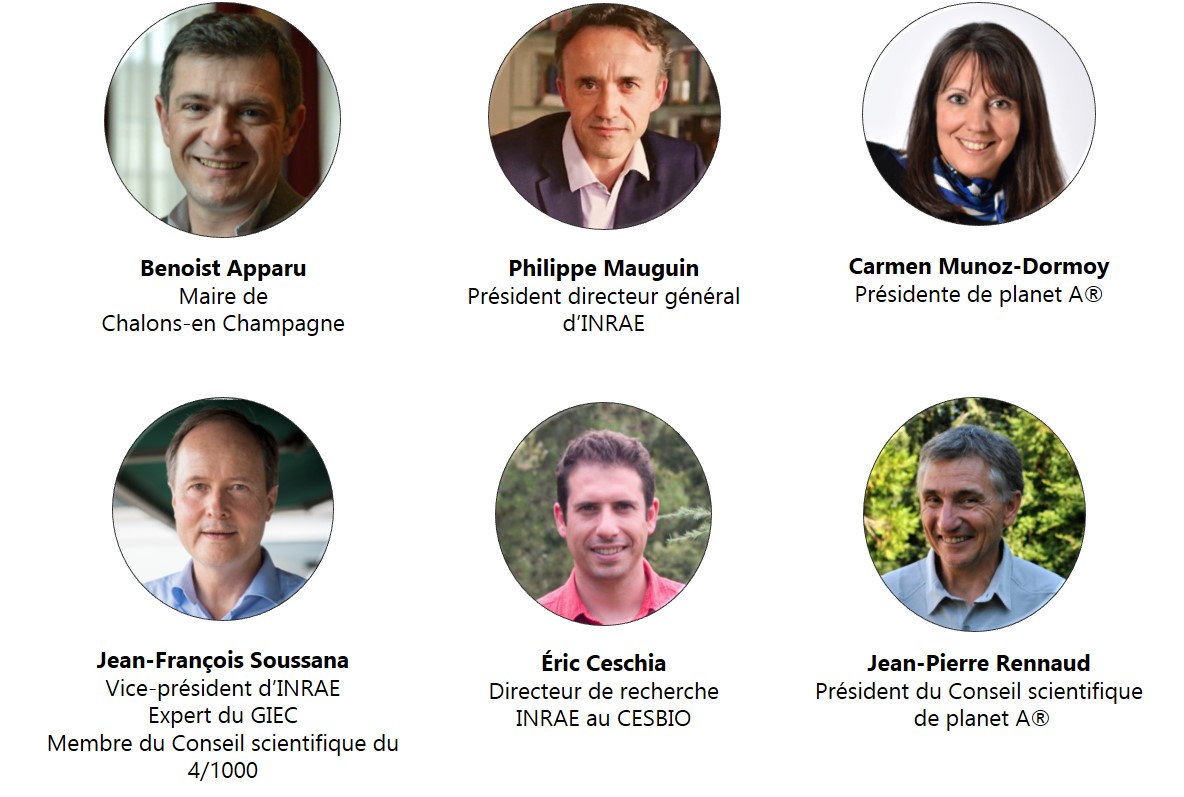Agroecology Reading time 3 min
INRAE and planet A® team up to create the world’s first indicator of carbon stock changes in agricultural soils
Published on 09 April 2021 (date.last_update 16 April 2021)

Agricultural land accounts for nearly 38% of the world’s land mass. Although often pointed to as a source of greenhouse gas emissions, agricultural land can help fight climate change by storing carbon – if land users opt for responsible, virtuous agricultural practices. INRAE, represented by Jean-François Soussana, the institute’s vice-president of international policy, and the planet A® association, at the urging of its scientific advisory board president, Jean-Pierre Rennaud, have forged a partnership to develop an indicator to measure carbon stock changes in agricultural soils. The first version of this new indicator, called SOCCROP, should be available to agricultural stakeholders by early 2022.
A partnership that follows on from the 2019 planet A® forum
This partnership follows work carried out as part of the “4 per 1000” initiative. It was announced at the close of the 2019 planet A® forum, whose theme was “Earth, matter, planet: soil quality for a healthy world”.[1] The planet A® association, which makes agriculture the centrepiece of joint solutions, was created in 2017 as a cross-disciplinary hub where economic, demographic, societal and environmental experts could exchange perspectives. The partnership with INRAE, whose vice-president of international policy is also a member of the “4 per 1000” scientific and technical advisory board, illustrates planet A®’s desire to develop concrete solutions for the agricultural world. Possible solutions are put forward by major research organisations specialised not only in the agricultural and food sciences but also at the cutting edge of environmental research.
“This project will improve our understanding of the international dynamics at work in the management of cultivated soils and their carbon stocks. It prefigures the work that is expected to begin in 2022 by the International Research Consortium on soil carbon, which was prepared by the CIRCASA project that INRAE coordinated,” says Philippe Mauguin, INRAE Chair & CEO.
“This new indicator is the result of a strong commitment undertaken by planet A® during the second International Forum held in Châlons-en-Champagne, France, in 2019. It will be the very first of its kind and will give agricultural stakeholders a real tool to improve the quality of their soils. I am convinced that, in the long run, it will be a major environmental protection tool on an international scale,” says Benoist Apparu, mayor of Châlons-en-Champagne.
An INRAE team, under the leadership of Éric Ceschia (Centre d’Études Spatiales de la Biosphère, known as CESBIO), has demonstrated a direct link between the annual duration of vegetation cover in cultivated soils and carbon accumulation for field crops in Europe. These initial findings formed the cornerstone of the project to develop an indicator of carbon storage in agricultural soils.
“This partnership will make it possible, for the first time, to produce an objective indicator, at the field level and on a global scale, of the quantity of CO2 that can be absorbed or emitted by agricultural fields depending on farmers’ chosen production systems. SOCCROP will make it easier to estimate carbon balances at the field level to support sustainable soil management and fight global warming,” says Jean-François Soussana, INRAE’s vice-president of international policy and member of the scientific and technical advisory board of the “4 per 1000” initiative.
A global indicator to monitor changes in carbon stocks and support the sustainable management of agricultural soils
Variations in soil vegetation cover directly affect the carbon fixed by vegetation and therefore by the soil. The degree to which the carbon stock of an agricultural field fluctuates depends on the balance of inputs (photosynthesis and organic fertilisation) and outputs (from crops, grazing, soil respiration, and leaching of organic carbon). The soil carbon balance can be modelled based on net inputs. This method, which can be used at different scales (field, farm, region, planet), will make it possible to monitor the soil carbon baseline and any additional storage.
The draft version of the indicator has two complementary aims. The first is to analyse and model the relationship between the duration of soil cover and carbon storage potential at the country level in France using data from the “4 per 1000” study. The findings will be reported in 2021. The second aim is to quantify the duration of agricultural soil cover from annual crops or vegetation on a field scale and across all regions of the world. The study will use data gathered by the European Space Agency’s Sentinel satellite, and the first analyses will be produced by the end of 2022.
The SOCCROP indicator will thus make it possible to observe the regions around the world where an increase in duration of vegetation cover on cultivated land is gaining or losing ground. By using the indicator alongside data on agricultural practices (organic fertilisation, crop residue management, etc.), researchers will be able to produce a global dashboard to monitor changes in carbon stocks in agricultural soils and understand the pace at which practices compatible with the “4 per 1000” objective are being deployed around the world.
| A carbon storage indicator based on the calculation of annual net CO2 fluxes from agricultural fields | |
|---|---|
|

[1] The “4 per 1000” initiative was launched at the end of COP21. The initiative’s secretary general, Paul Luu, represents “4 per 1000” on planet A®’s scientific advisory board. “4 per 1000” aims to increase the world’s soil organic carbon stocks by 0.4% each year in order to offset part of the world’s anthropogenic greenhouse gas emissions.
